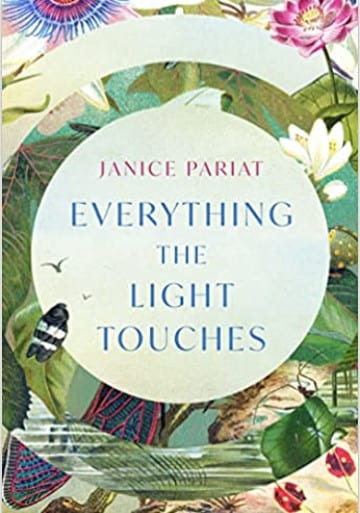There is diversity, yet a unity in this multiplicity.
p135
This is an interesting and well-written book and would fall into the category of eco-lit rather than cli-fi. It tells the story of four people: Shai, Evelyn, Johann and Carl in separate stories but of course all linked.

Shai’s story takes place in the present times in or near Assam in India, up in the hills in a place called Shillong which she longed to leave as a young adult. She went to work in Delhi and came back regularly but eventually returned home, not sure what she wanted to do. Although she has a difficult relationship with her mother, her nanny Oin looks after her, tells her stories and makes sure that she is watched over. The uranium mines in the area are slowly ruining the land and water systems and now people from the city want a new road that will cut through the area.
Evelyn’s story takes place in Edwardian times when she leaves her family and sets sail for India on the ‘Fishing Fleet’ where all the women hope to catch a husband apart from Evie who uses it as an excuse to escape and travel and indulge in botany. She has a degree in botany which makes her quite unsuitable as marriage material but what drives her is her desire to find the plant of all plants where everything plant comes from and she believes she will find it in the hills of Assam in the wettest place on the planet. She is a member of the Goethian Science Group – a small one consisting of a brother and sister and herself; a new way of seeing plants and their botany.
. . . she had a wish to study botany with curiosity and playfulness and a compassionate regard for plants as living, growing, everchanging beings.
p149
The Johann in this story is Johann Goethe who escapes from the Weimar Republic to travel and indulge in botany although he is self-taught. He gets as far as Italy, and goes down to Sicily and develops his thinking about the study of plants that is the opposite of Linnaeus’ classification system. In the end, he returns albeit reluctantly and eventually writes books about his understanding of the science of plants.
And then there is Carl who is of course Linnaeus and his story is told through note-like poems.
The point of this book is multi-faceted. It is a deep argument for an understanding that living things are living and should be studied as such, not plucked and collected, taken apart and classified. They have a history and an expression which should be ‘seen’ This is Goethe’s theory, which Evie understands and sees and which Shai almost sees but not completely.
There are four stages to Goethe’s theory:
- This is an exact sense perception, a detailed observation of the phenomonen using ‘bare facts’ where the phemomonen speaks for itself.
- This is the exact sensorial fantasy where the obeserver perceives the object in time with a history, its different stages, how it changes and how it exists as a series of forms.
- Seeing is beholding. Here the phenomonen express themselves to the observer and is often expressed by the observer as poetry, art, music or other emotional forms.
- The final stage where the observer is ‘at one’ with the phenomonen.
The structure of this book is unusual and supports the story telling well. We get each person’s story told separately working back in time but only the first half of thier story until we get to Linaeus where we pivot and then get the second half of each story working forwards in time. Goethe’s theory is an antithesis to Linaeus classification and categorisation, but it is Linnaeus’ story that is told in poetry or near poetry which would be stage 3 on Goethe’s steps to ‘seeing’ phemomena.
The book is also about life cycles, folk lore and mythology, love and a disappearing way of life and the lengths people will go to save ancient forests and the land that their families have worked on for generations. There is a real tension between people from the city thinking that the land is a wasted resource because it is not monetised and the rural people of the villages not needing more than their land to sustain themselves but having the young people drawn to the cities. There is the intervention of the state for the ‘benefit’ of the people such as forcing nomadic tribes to settle and how this ensures that they are wiped out. There are shades of what happened to many First Nations around the world here.
This is a big book, with a big message and a wonderful read. At the end of the book Pariat says that the novel is infused with the spirit of Robin Wall Kimmerer’s book Braiding Sweetgrass. I have had this book sitting on my TBR table for over a year and so will read it next.
If you enjoyed this book, you might also enjoy The Signature of All Things by Elizabeth Gilbert.